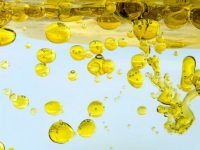Water In Oil, What's the Big Deal?
Water in lubricating oil has been a point of keen debate as long as oil analysis has been used to monitor equipment and lubricant condition. How much is too much? Where does it come from? Does it really hurt equipment? What form of water is of concern? How is it controlled?
Water can be present in lubricating oil in three different forms:
Dissolved water refers to water that has been chemically absorbed into the oil. While dissolved water possesses no direct threat to the component being lubricated, its presence can serve as a catalyst to oxidation. Dissolved water is normally not visible in an oil. Emulsified water is water that maintains its chemical integrity, but is held in suspension in the oil by additives and contaminants.
Emulsified water will severely alter the load handling ability of an oil. When temperature and pressure are applied to a contaminated fluid, the oxidation process is significantly accelerated, leading to premature degradation. Internal corrosion and rust will also result in all areas of the system. When oil has emulsified water, it will take on a hazy or milky appearance.
Free water describes water that is present in the oil but not held in suspension. Since oil and water don’t mix an oil’s base stock will be constantly trying to separate from water. Without additives or contaminants to bond with the water, it will separate rapidly and settle to the bottom of the oil. Free water will be visible in oil as a separate phase at the bottom of the oil reservoir.
In general, water is a poor lubricant. Proper lubrication is dependent on the formation of an oil film to separate opposing friction surfaces. When pressure is applied to an oil film, the oil’s viscosity will increase proportionally to maintain protection. Water does not exhibit this tendency and will cause boundary lubrication to occur where full fluid film lubrication would otherwise be present.






